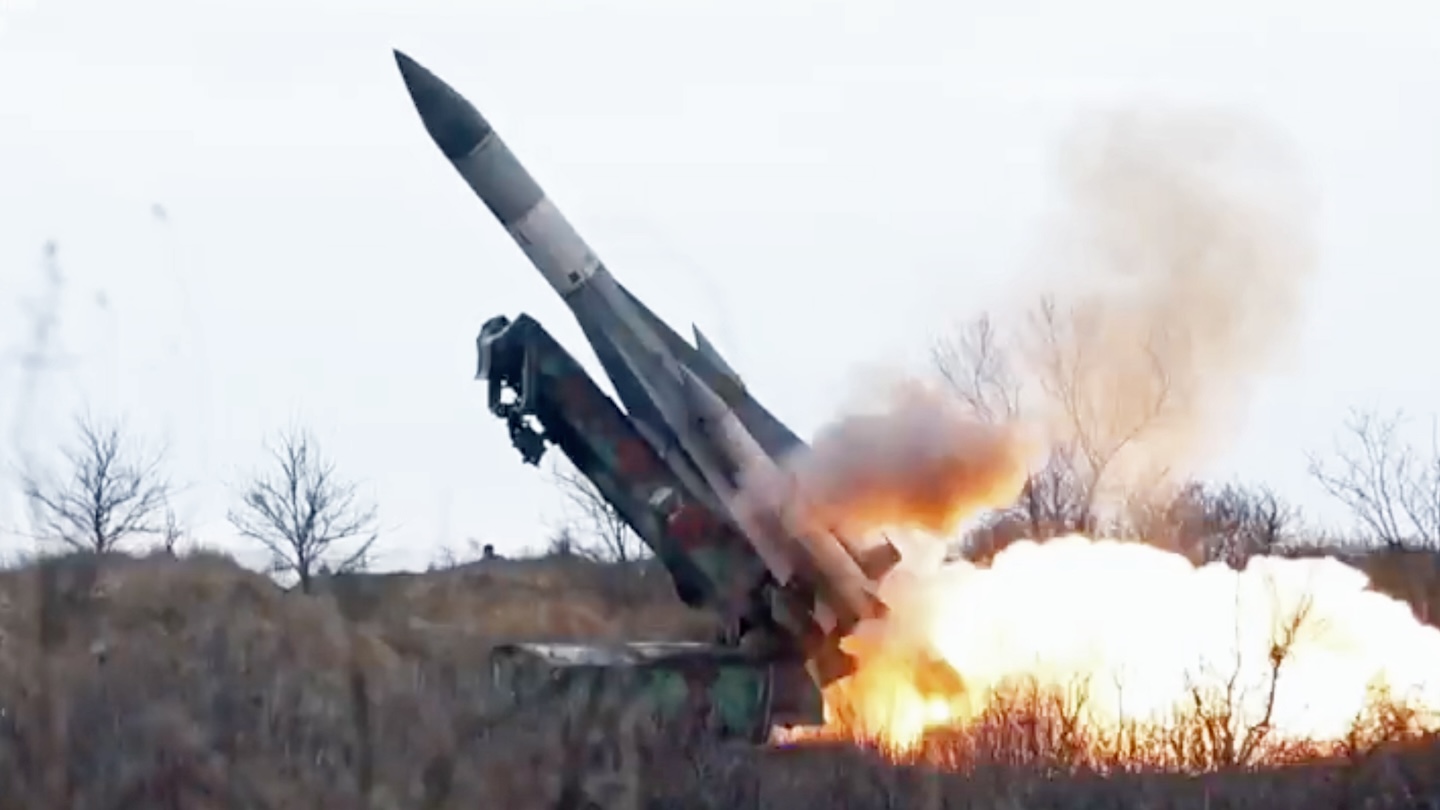Ukraine has, apparently for the first time, released a video showing its use of the Soviet-era S-200 (SA-5 Gammon) long-range surface-to-air missile, a weapon that was reinstated to service only after the full-scale Russian invasion in February 2022. Since then, the S-200 has not been seen in official imagery but has been credited by Kviv with the high-profile destruction of an A-50 radar plane and a Tu-22M3 bomber.
The footage in question was published by the Ukrainian Ministry of Defense’s Main Directorate of Intelligence (GUR). Filmed at an undisclosed location, the video shows the missiles being raised into position before blasting off from their fixed launchers somewhere on the Black Sea coast. It’s not clear when the footage dates from, but the foliage suggests it was taken at some point in the fall, winter, or early spring.
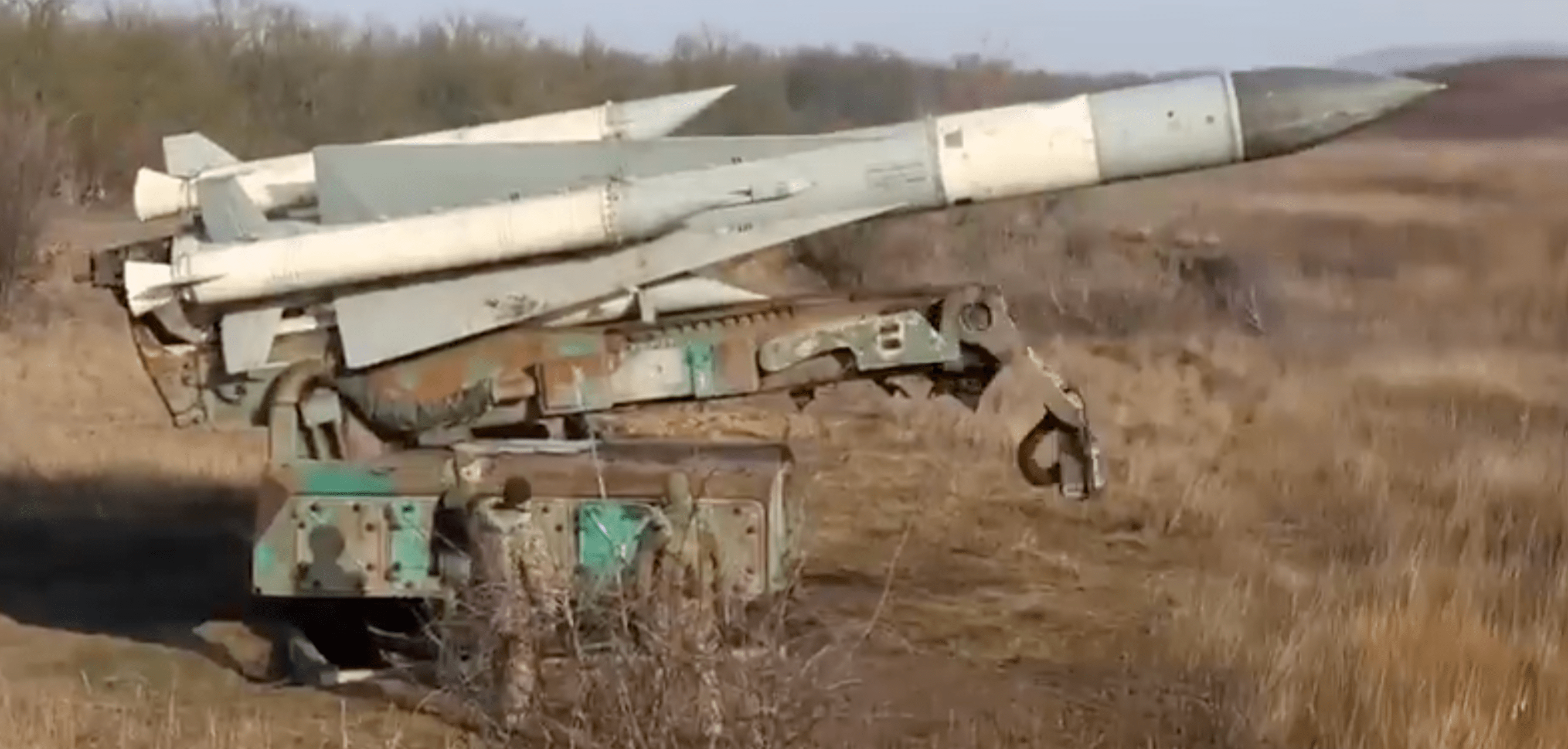

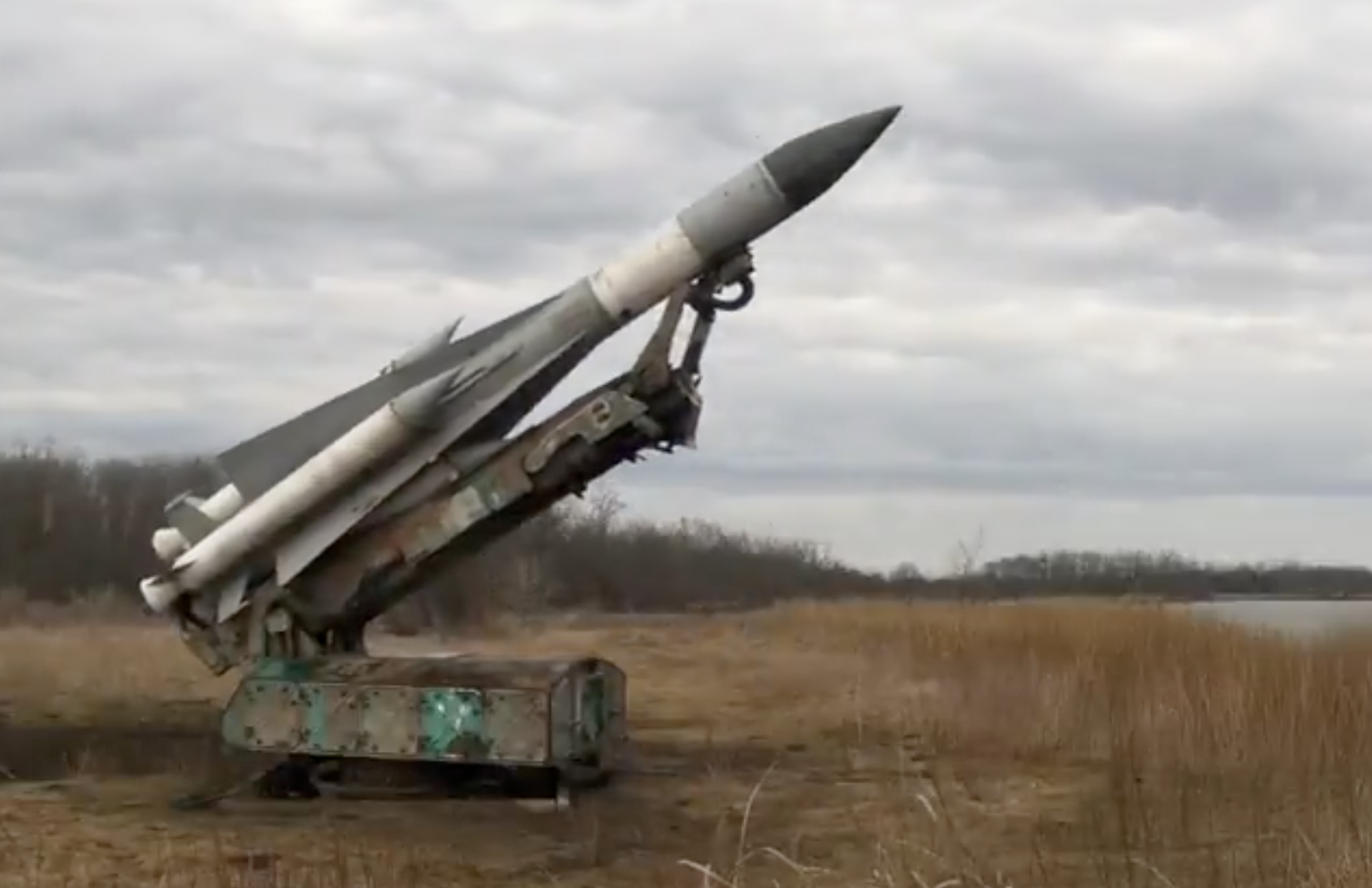
Very much a product of the Cold War, the S-200 was first introduced to service by the Soviet Union in the late 1960s. At that time, its main mission was to bring down high-flying U.S. bombers and reconnaissance aircraft. Typically, each S-200 system was deployed in static batteries that typically comprised six single-rail launchers, supported by a long-range surveillance radar, a target search and acquisition radar, a missile guidance radar, and multiple other support elements. In the GUR video, only the missiles and their launchers are visible.
As for those missiles, they are from the 5V28 series and each measures around 35 feet in length, with a diameter of almost 34 inches. The missiles are first powered off their launcher using a cluster of four jettisonable solid-propellant boosters around the body, before a single-stage liquid-fuel motor kicks in.

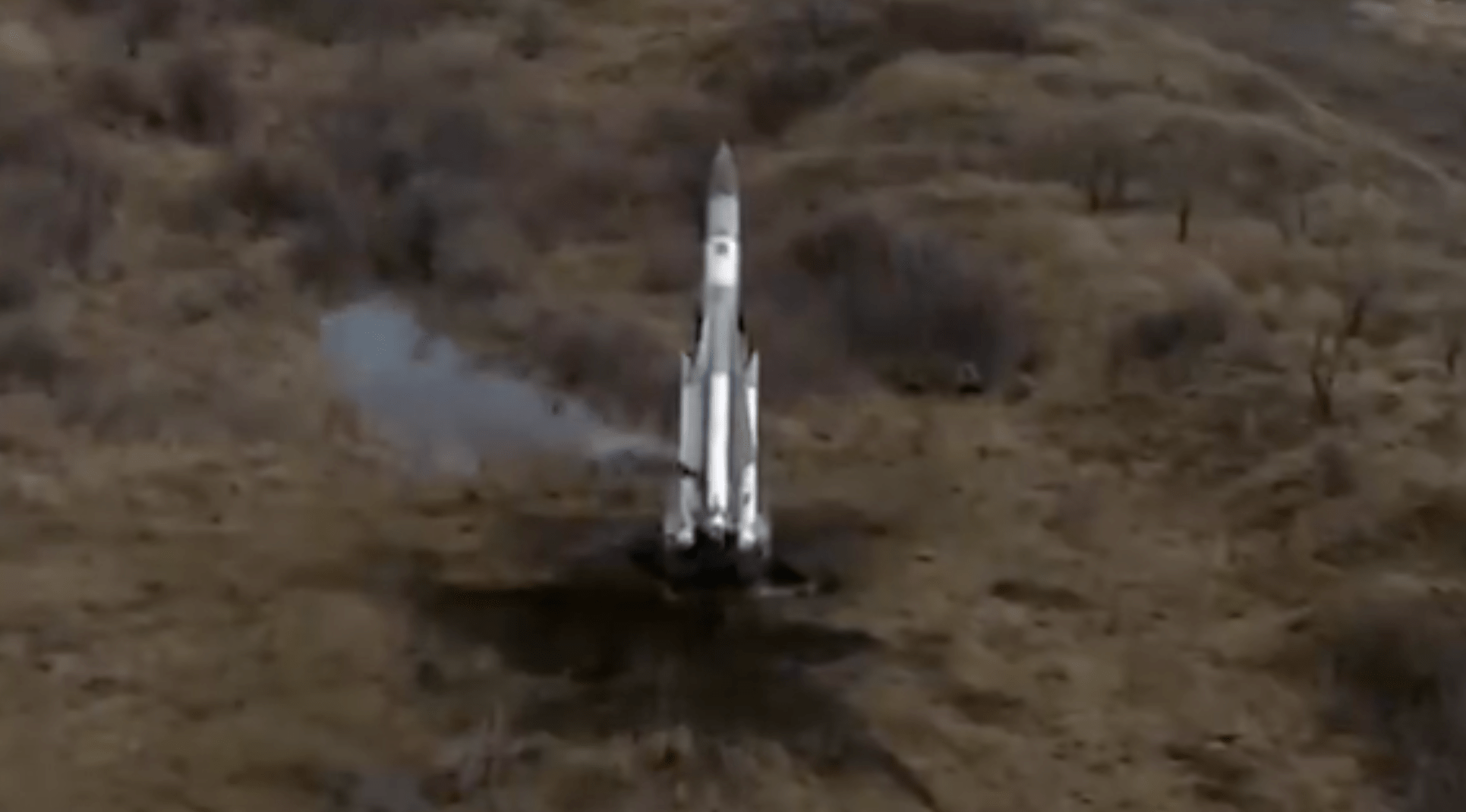

These missiles were refined during their initial service, with later models able to engage targets at a maximum range of around 186 miles. In Soviet service, the 5V28 could be armed with a command-detonated nuclear warhead, although those that remained in Ukrainian stocks were all fitted with a conventional 480-pound warhead, armed with a proximity fuze.
Prior to the current conflict with Russia, the S-200 was best known in Ukrainian service for the infamous incident in October 2001, when an errant missile from one of the batteries shot down a Russian airliner over the Black Sea, during a live-fire exercise.
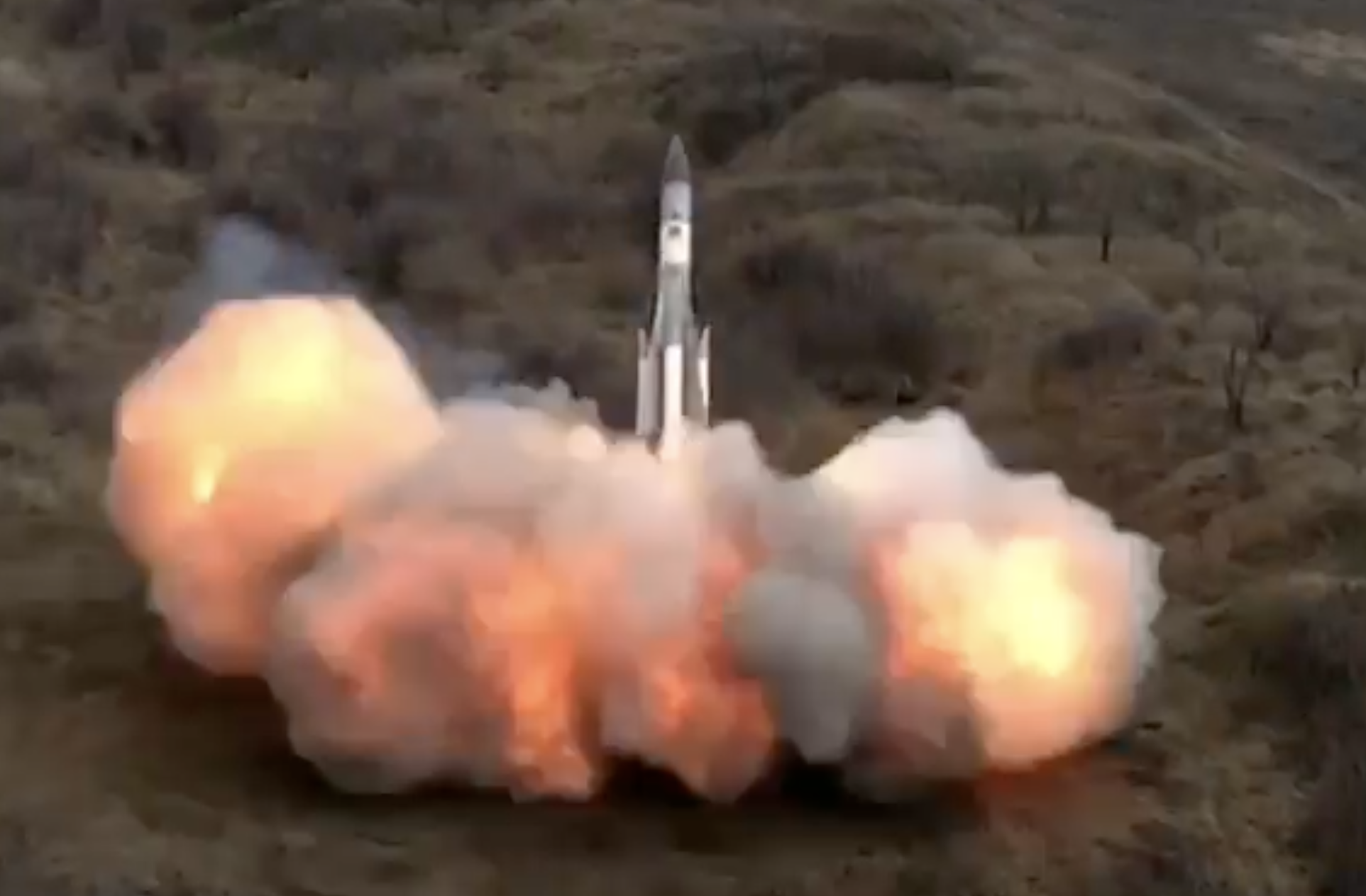
By this point, the system was already showing its age, and by 2010, it was reported that Ukraine only had four S-200 batteries still active, with another 12 sites inactive. Further reports suggest the S-200 was removed from service entirely in 2013.
Nonetheless, it appears that the demands of Russia’s full-scale invasion led to at least some of these sites being reactivated or possibly reinstated at different locations. It’s likely that much of the required infrastructure was still in place, or could be quickly returned to operational status, with the launchers fed by stocks of the missile that had been held in reserve.
Somewhat surprisingly, the first evidence of Ukraine using the S-200s after February 2022 came from Russian accounts of the missiles being deployed in a surface-to-surface role. Russian reports from the summer of 2023 suggested the missiles were being used to attack land targets in Russian rear areas within Ukraine and in Russia itself.
One video from this period appears to show a missile that looks very similar to one fired by an S-200 system diving almost vertically onto a target, supposedly in the Bryansk region of western Russia, which borders Ukraine.
Another video, from local surveillance cameras, in the same period, shows what looks to be a 5V28 series missile from an S-200 diving vertically onto a target — reportedly a sawmill — in the settlement of Bytosh, also in the Bryansk region.
There were also Russian reports in 2023 of the Ukrainian S-200 being used to attack Morozovsk Air Base in the Rostov region.
Some accounts suggest the S-200 was also tasked with attacks on the vital Kerch Bridge, which connects Russia to Russian-occupied Crimea. Also in the summer of 2023, Ukrainian media reported an attempted strike on the bridge using the system, while Russian sources claimed that their air defense operators shot down at least one missile just north of the Taman Peninsula, which borders the Azov Sea to the north, the Kerch Strait to the west, and the Black Sea to the south. Wreckage of the intercepted missile is said to have come down in the Azov Sea.
Despite claims from the Russian Ministry of Defense that a total of three missiles from the S-200 were successfully intercepted, the incident reportedly led to the temporary closure of the Kerch Bridge by Russian authorities.
Claims of the S-200 being used to strike such pinpoint targets should be treated with caution, since it would require extreme accuracy, unless the missile was retrofitted with a GPS guidance system, for example.
Still, as we noted at the time, the S-200 gives Ukraine a useful, if extemporized, quasi-short-range ballistic missile-like capability. There is also the possibility that the missiles were more extensively modified for the land-attack role, which could provide them with improved accuracy, although there’s no evidence of this so far. Either way, there is no doubt that Ukraine desperately needed a ballistic missile at this time — and still does.
In its original form, the 5V28 series missile uses an inertial guidance system with updates provided by radio link before switching to semi-active radar homing for the terminal phase. For ground targets, the missile would have to be modified to hit within a certain circular error probable (CEP), or otherwise use GPS to hit a target more precisely.
While it’s never been clear how many S-200 systems are available to Ukraine, it has reportedly also been used in its original air defense role, with some impressive results, according to Ukrainian authorities.
In April of 2024, Lt. Gen. Kyrylo Budanov, the head of the GUR, exclusively disclosed to TWZ that an S-200 had been used to bring down a Russian Tu-22M3 Backfire-C bomber that crashed in the Stavropol territory of southern Russia. The U.K. Ministry of Defense subsequently said it was “almost certain” that an S-200 was used to bring down the Tu-22M3.
Budanov told TWZ that the Tu-22M3 was engaged at a distance of 308 kilometers — or around 191 miles — from the S-200 battery.
At the same time as the Tu-22M3 claim, the GUR said that Ukraine had used the same means to shoot down a Russian A-50 Mainstay airborne early warning and control aircraft earlier in the same year. Ukrainian officials had previously claimed the destruction of two A-50s while airborne, but hadn’t previously specified what weapons were used to do this.


On other occasions, Ukraine has used the Patriot air defense system to down fixed-wing tactical aircraft and helicopters at long range, including when they are flying within Russian airspace. Using the Patriot, Ukraine has reportedly successfully targeted aircraft at a range of around 100 miles, very much at the limits of its engagement envelope.
Despite its age, the S-200 can, in theory, engage targets at much greater ranges, although the claimed 191-mile shootdown of the Tu-22M3 would put it just outside the system’s known performance parameters.
However, a Ukrainian defense official confirmed to TWZ that Ukraine had received “help from partners” to produce an updated guidance system for the S-200. “The missile itself has a good maneuvering system, so if provided with proper guidance is quite a modern weapon,” the official added. This may help explain not only how the target acquisition and missile guidance were achieved, but also how it was able to bring down a target at such a great range. Since then, other air defense solutions involving Western sensors or effectors have become more prevalent in Ukrainian service. With that in mind, combining the S-200 into more advanced sensors for initial targeting, for example could be an option.
With Ukraine’s insatiable demand for air defense systems, it makes sense to reactivate some of its S-200 systems to bolster its legacy surface-to-air missile systems, as well as those provided by Western allies. Clearly, the S-200 is several generations behind modern ground-based air defense systems, but its very long reach ensures that it has utility in particular scenarios, a fact that its apparent combat successes would seem to attest to.
Contact the author: thomas@thewarzone.com
